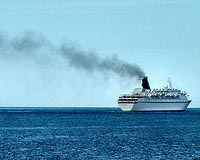 |
Beijing (UPI) Oct 22, 2009 The first flight of possibly the world's largest amphibious plane is set for 2013 with mass production to begin in 2015, according to Chinese media. The Chinese government announced in June that it would develop and produce the Dragon 600, similar in size to an Airbus A320 passenger plane. Aviation Industry Corp. of China was given the task of putting the project together, but no date for a maiden flight was set. The plane could be used for tasks such as emergency rescue, fighting forest fires and sea patrols, Hu Haiyin, deputy general manager AVIC, said in a report this week by the national Chinese news agency Xinhua. Hu said that market research indicated a domestic market for 60 craft in the next 15 years. But the Xinhua report gave no indication of how large an international market could be, if one exists at all. AVIC plans to have around 1,500 employees working on the project, mainly based at their facilities southwest of the Zhuhai airport in the southern Guangdong region. The first construction phase is scheduled for completion in 2012. Since the government announced the project, analysts have suspected that the size of the plane could also make it suitable for long military surveillance missions. It could be especially suitable to missions in the South China Sea, an analyst said on Radio Australia in June after the first announcement. A report on the China Daily news Web site this week said Chen Zhengguo, the project's chief engineer, believed the Dragon 600 could carry out long-range air-sea rescues and be deployed on anti-submarine missions. The news puts AVIC further into the manufacturing spotlight. AVIC, a consortium of aircraft manufacturers, signed a deal in January with European aircraft maker Airbus. Their joint venture business will build a factory in Harbin, northeast China to jointly produce composite material parts and components for the new wide-body A350 aircraft by the end of next year. In March China's CITIC Bank granted a $2.2 billion credit line to AVIC, Xinhua reported. "Aviation is a strategic industry for our country's development, and the restructuring of AVIC has given CITIC Bank a vast opportunity for business cooperation," an unnamed bank official was quoted as saying. AVIC was created last year out of a merger of two state aircraft makers with sights set on big projects, including a locally developed regional jet, to reduce China's reliance on Boeing and Airbus. Combined 2008 sales for the two companies that merged were $24.3 billion, compared with $60.1 billion for Boeing, the report said. No design details about the Dragon 600 were given out in the Chinese media this week. However, a report in the China Economic Review in August said the Dragon 600 "is a larger version of the SH-5, a seaplane that had a production run of four." But the now aging ShuiHong-5 was not a resounding success, analysts have argued. Up to six of the SH-5 aircraft were made in 1984 and 1985, all by the Harbin Aircraft Manufacturing Corp. The maiden flight was eight years before manufacturing began. Design work started in the early 1970s but work was delayed due to the upheaval of China's debilitating Cultural Revolution. The planes, all operated by the People's Liberation Army Naval Air Force, are essentially flying boats with only limited beaching capability. With their high wings they have been compared to the PBY Catalina, HU-16 Albatross and the Bombardier 415. It was to replace China's aging Soviet Beriev Be-6 planes, known to NATO as Madge. Despite the SH-5 mimicking Western-made planes in design and being striking in appearance, it was largely a technical flop, according to a report on SinoDefence.com. The all-metal SH-5 has an unpressurised cabin and with its four DongAn (DEMC) Wojiang-5A1 turboprop engines, each rated at 3,150ehp, is underpowered. As a result it flies at lower altitude and slower than designed for. However, the aircraft can carry two Type 23-1 23mm cannons in a dorsal turret. The weapon bay carries mines, depth charges or bombs. Underwing hardpoints are used for two YJ-1 (C-101) anti-ship missiles on the inner units and up to six lightweight homing torpedoes, depth charges or other disposable weapons on the outer units. Share This Article With Planet Earth
Related Links Aerospace News at SpaceMart.com
 EU seeks emissions reductions for planes, ships
EU seeks emissions reductions for planes, shipsLuxembourg (AFP) Oct 21, 2009 European environment ministers made tentative progress on Wednesday in moves to curb harmful carbon emissions, notably targeting planes and ships. Agreement was secured at a meeting in Luxembourg that the European Union would work towards reducing overall emissions by 95 percent come 2050, instead of the current 80 percent -- but without making any firm commitment. They also adopted a ... read more |
|
| The content herein, unless otherwise known to be public domain, are Copyright 1995-2009 - SpaceDaily. AFP and UPI Wire Stories are copyright Agence France-Presse and United Press International. ESA Portal Reports are copyright European Space Agency. All NASA sourced material is public domain. Additional copyrights may apply in whole or part to other bona fide parties. Advertising does not imply endorsement,agreement or approval of any opinions, statements or information provided by SpaceDaily on any Web page published or hosted by SpaceDaily. Privacy Statement |